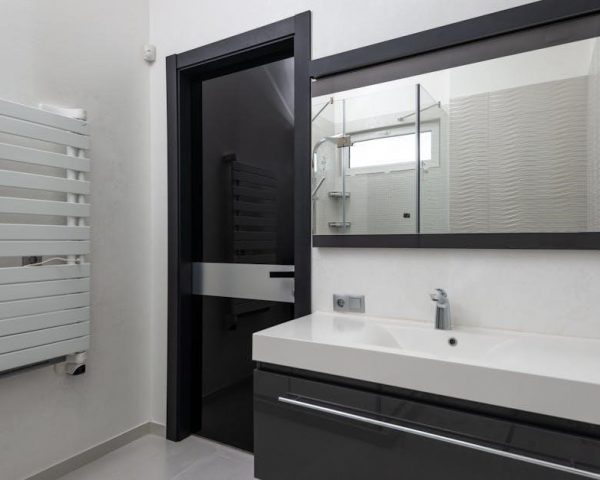The Sheltered Instruction Observation Protocol (SIOP) is a research-based instructional model developed by Jana Echevarria, Mary Ellen Vogt, and Deborah Short. It integrates language and content instruction to support English language learners, ensuring they develop academic language while accessing grade-level content. SIOP provides a structured framework for teachers to deliver inclusive, effective lessons, benefiting all students, not just ELLs.
Overview of SIOP and Its Importance in Education
The Sheltered Instruction Observation Protocol (SIOP) is a research-based framework designed to support English language learners (ELLs) by integrating language and content instruction. Its importance lies in promoting academic language development, cultural responsiveness, and inclusivity. SIOP ensures ELLs access grade-level content while building linguistic confidence. It equips teachers with strategies to create engaging, linguistically supportive lessons, fostering equitable education for diverse learners and enhancing overall instructional effectiveness.

Key Components of the SIOP Model
The SIOP Model includes eight key components: lesson preparation, building background, comprehensible input, strategies, interaction, practice/application, lesson delivery, and review/assessment. These components ensure a balanced, inclusive approach to teaching English language learners, aligning language development with content learning for equitable academic success.
Lesson Preparation and Planning Strategies
Effective lesson preparation in SIOP involves setting clear content and language objectives, ensuring alignment with academic standards. Teachers scaffold instruction by breaking tasks into manageable steps and pre-teaching key vocabulary. Lesson plans incorporate visual aids, hands-on activities, and opportunities for student interaction. This structured approach ensures English learners can access content while developing language skills, fostering an inclusive and supportive learning environment.
Building Background Knowledge and Academic Language
SIOP emphasizes building students’ background knowledge through explicit instruction and visual aids. Teachers use scaffolding techniques, such as think-pair-share, to connect new concepts to prior experiences. Academic language development is supported by explaining high-frequency vocabulary, using cognates, and limiting idioms. This approach ensures English learners grasp complex content while advancing their language proficiency in a structured and engaging manner.

Instructional Strategies in SIOP
SIOP instructional strategies include scaffolding, visual aids, and explicit instruction. These techniques ensure all students, especially ELLs, can successfully access and engage with content effectively.
Scaffolding Techniques for Language Development
Scaffolding techniques in SIOP involve temporary support tailored to students’ needs, helping them grasp complex concepts. Strategies include modeling, guided practice, and gradual release of responsibility. This approach ensures ELLs build language proficiency while mastering content, fostering independence and confidence in their learning process through structured, incremental assistance.
Using Visual Aids and Multimodal Instruction
Visual aids and multimodal instruction are essential in SIOP, enhancing comprehension for English learners. Teachers use images, diagrams, and videos to make complex concepts visually accessible. This approach engages multiple senses, fostering deeper understanding and active participation. By integrating visual and verbal elements, educators create a rich learning environment that supports language development and content mastery simultaneously.

Role of Assessment in SIOP
Assessment plays a crucial role in SIOP by monitoring student progress, providing feedback, and guiding instructional decisions. Informal assessments help teachers adjust strategies to meet learners’ needs effectively.
Informal Assessments for Monitoring Student Progress
Informal assessments in SIOP involve observing student participation, reviewing work, and using formative checks to monitor progress. These ungraded, spontaneous evaluations help teachers identify gaps, adjust instruction, and provide timely feedback. Strategies include quick checks, exit tickets, and verbal responses, ensuring instruction aligns with student needs and promotes continuous learning for all learners, particularly English language learners.
Using Feedback to Guide Instructional Decisions
Feedback in SIOP is used to refine instruction, ensuring student understanding and progress. Teachers gather insights from informal assessments, student responses, and discussions to adjust lessons. Corrective feedback is provided promptly, addressing misconceptions and guiding learners. This data-driven approach ensures tailored instruction, fostering academic growth and language development for all students, particularly English learners;
Supporting English Language Learners (ELLs)
SIOP strategies emphasize building background knowledge and academic language, enabling ELLs to access content while developing English proficiency. Techniques include scaffolding, visual aids, and explicit instruction, fostering an inclusive environment where ELLs feel supported and engaged in learning.
Strategies for Promoting Student Engagement
SIOP strategies like Think-Pair-Share and cooperative learning encourage active participation and collaboration, allowing ELLs to engage confidently. Visual aids and hands-on activities also enhance interaction, making lessons dynamic and inclusive. Providing opportunities for students to use learning strategies ensures all learners are actively involved and motivated, fostering a supportive classroom environment that values diverse perspectives and promotes academic success.
Integrating Content and Language Instruction
SIOP seamlessly integrates content and language instruction by using high-frequency vocabulary, cognates, and explicit language support. Teachers explain unfamiliar terms and limit idioms to ensure clarity. This dual focus ensures ELLs build academic language while mastering subject matter, making lessons accessible and meaningful. The approach bridges language development with content learning, creating a cohesive and effective instructional experience for all students.

Implementation of SIOP in the Classroom
SIOP is effectively implemented through professional development, creating an inclusive environment, and using research-based strategies to support language development and content learning for all students.
Training and Professional Development for Teachers
Teachers implementing SIOP benefit from comprehensive professional development, including workshops, coaching, and modeling. Training focuses on lesson planning, scaffolding techniques, and integrating content with language instruction. Ongoing support ensures educators master strategies like explicit instruction and differentiated instruction, fostering inclusive classrooms. This development equips teachers to effectively support English learners and all students in achieving academic success.
Creating an Inclusive Classroom Environment
SIOP emphasizes fostering an inclusive classroom environment by promoting equity and access for all students. Teachers use strategies like visual aids, cooperative learning, and scaffolding to ensure English learners feel supported. The model encourages cultural responsiveness, validating students’ backgrounds and experiences. This inclusive approach enhances engagement, builds confidence, and creates a positive learning atmosphere where every student can thrive.

Effectiveness of SIOP Strategies
Research validates SIOP’s positive impact on student outcomes, particularly for multilingual learners. Its structured framework ensures equitable access to content, enhancing academic achievement and language development effectively.
Research-Based Evidence of SIOP’s Impact
Research confirms SIOP’s effectiveness in improving academic outcomes for multilingual learners. Studies highlight significant gains in language proficiency, content knowledge, and overall academic performance. By integrating language and content instruction, SIOP addresses diverse learning needs, fostering an inclusive classroom environment. Its structured approach ensures that all students, particularly English learners, achieve measurable success across various subjects and grade levels.
Success Stories and Case Studies
SIOP’s effectiveness is evident through numerous success stories. A vocational college near Seoul implemented SIOP with educational technology, achieving significant improvements in student outcomes. Educators reported enhanced engagement and academic growth among ELLs. Case studies highlight how SIOP fosters inclusive classrooms, with measurable gains in language proficiency and content mastery. These real-world examples demonstrate SIOP’s transformative impact on teaching and learning.

Common Accommodations and Modifications
SIOP incorporates scaffolding techniques, cognates, and high-frequency vocabulary to support diverse learners. These modifications ensure equitable access to content, fostering language development and academic success for all students.
Learning Scaffolds and Differentiated Instruction
SIOP employs scaffolding techniques to gradually build students’ independence. Teachers use visual aids, modeling, and guided practice to support language development. Differentiated instruction tailors lessons to individual needs, ensuring all learners access content. Scaffolding bridges gaps in understanding, while differentiated strategies like Think-Pair-Share and small groups promote engagement and equitable participation, fostering academic success for diverse learners.
Using Cognates and High-Frequency Vocabulary
SIOP strategies emphasize the use of cognates and high-frequency vocabulary to aid language development. Teachers identify cognates from students’ native languages to bridge understanding. High-frequency words, essential for comprehension, are explicitly taught. This approach simplifies complex concepts, making content accessible while fostering academic language proficiency and supporting ELLs in meeting rigorous standards effectively.
Technology Integration in SIOP
Technology integration in SIOP enhances customized instruction, utilizing digital tools and resources to support language development and content understanding, aligning with research-based strategies for diverse learners.
Tools and Resources for Implementing SIOP
Effective SIOP implementation relies on digital tools, multimedia resources, and online platforms that support lesson design, language development, and content integration. Teachers use educational software, interactive whiteboards, and mobile apps to enhance engagement and differentiation. Additionally, accessible databases and training modules provide educators with research-based strategies and examples to ensure successful outcomes for multilingual learners, fostering an inclusive and dynamic learning environment.
Customized Instruction Through Educational Technology
Educational technology enables tailored instruction in SIOP by providing adaptive learning platforms, multimedia resources, and interactive tools. These technologies allow teachers to differentiate instruction, offer real-time feedback, and track student progress. Integrating technology enhances engagement and accessibility, ensuring ELLs receive personalized support. Tools like language learning apps and digital content libraries further enrich instruction, aligning with SIOP’s emphasis on meeting diverse learner needs effectively.
The SIOP model has proven effective in supporting diverse learners, with ongoing research and professional development ensuring its continued relevance. Future directions include expanding its application to new educational contexts and integrating innovative technologies to enhance instruction, ultimately benefiting educators and students worldwide.
Expanding SIOP’s Reach and Application
The SIOP model is expanding its reach through integration with educational technology, enabling customized instruction for diverse learners. Strategies such as using cognates and high-frequency vocabulary are being adapted across various educational settings, including vocational colleges. This approach not only supports English language learners but also enhances instruction for all students, fostering inclusivity and academic success in mainstream classrooms.
Ongoing Professional Development and Support
Continuous professional development is crucial for effective SIOP implementation. Teachers engage in workshops, coaching, and peer collaboration to refine their skills. Schools provide resources like lesson plan checklists and technology tools to support instructors. Ongoing training ensures educators stay updated on strategies, fostering a supportive environment for both teachers and students to thrive academically.


